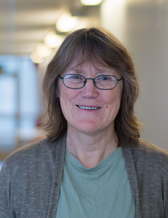The wastewater concentration of SARS-CoV-2 in and around Gothenburg remains high, but its exponential rise has ended, the latest measurements and analyses from the University of Gothenburg show.
The results now announced are based on samples taken in the week of January 17th-23rd. For the first time in over a month, no increase is seen: The relative level of coronavirus in the Gothenburg metropolitan area now seems to have stabilized.

The level remis still well above the peaks recorded in the earlier (first, second, and third) pandemic waves, but the week's results show a flattening of the curve after the recent exceptional rise.
"Lots of people are still infected, but at last the trend's going in the right direction. Omicron remains predominant by far, but the delta variant is still around," says Heléne Norder, adjunct professor of microbiology at Sahlgrenska Academy, University of Gothenburg, and microbiologist at Sahlgrenska University Hospital.
The scientists have been surveying SARS-CoV-2 in the wastewater since February 2020, in collaboration with municipally owned Gryaab. This company, which treats the wastewater treatment in Gothenburg itself and the outer municipalities, sends the researchers one sample a week, composed of samples collected daily.
The research group reports its results continuously to care providers and the Infection Control Unit in Region Västra Götaland. To a varying degree, the high concentrations of coronavirus in the wastewater, reflecting the increased prevalence of COVID-19 in the community, have enabled prediction of peak loads in health care during the pandemic.






